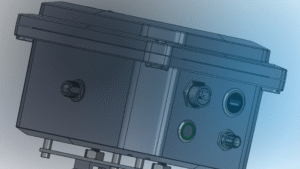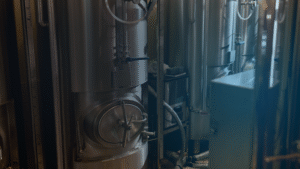Time is money. How long should your pasteurization cycle really be?
For production heads and process engineers, the practical answer is “only as long as it needs to be, every single time.” Excessive or inconsistent cycle times drain energy, steal throughput, and can still compromise quality. The way out of this ever-present danger is not more setpoint padding; it’s a clearer operating logic that standardizes decisions and turns time–temperature control into a repeatable discipline with zero-error results.
This piece distills that discipline into a simple decision tree and shows how teams can operationalize it with real-time visibility.
A Best-Practices Decision Tree for Right-Sized Cycles
Start with the product, not the equipment.
Clarify each SKU’s risk profile, shelf-life expectation, and flavor sensitivity. Lagers headed to warm-chain distribution will have a different tolerance than a hop-aromatic seasonal. Those constraints define the workable time–temperature window before you ever set cycle parameters. Industry guidance reinforces tying targets to product and route-to-market, not habit.
Choose the outcome metric — then commit to it.
PU is the language of control. Temperature is a means; lethality is the end. Align your team on pasteurization units (PUs) as the outcome measure and make it the language of setpoints, alarms, and post-run reviews. That shared vocabulary reduces the temptation to “add a minute just in case.”
Map the path, not just the peak.
Cycles succeed or fail across the whole profile: heating, holding, and cooling. Define expected product behavior at the cold spot and document acceptable bands for rise rate, minimum hold, and safe cooldown. Treat those bands as control limits, not suggestions.
Decide your lever — time or temperature — based on sensory headroom.
Flavor headroom determines your lever. If a brand is flavor-sensitive, favor slightly longer holds at gentler peaks; if sensory headroom exists, reduce hold by allowing a modest peak increase. Make the tradeoff explicit in the SOP so operators do not improvise under pressure.
Validate on real product, under real load.
Confirm the plan with instrumented packages on a representative shift, not a laboratory ideal. Record the actual profile through preheat, heat, hold, temper, and cool. Lock your control bands only after that live validation.
Control the outcome, audit the variance.
Run to the planned lethality band, not a single “hero number.” After each production day, review spread, not just averages. Identify where padding crept back in and trim it deliberately.
Iterate by exception, not by feel.
Variance, not averages, tells the truth. When drift appears (seasonal water changes, equipment wear, line-speed variation), adjust the smallest lever first and re-validate. Small, documented corrections prevent the slow march toward over-processing.
Why Inconsistency is So Expensive
Over-long cycles quietly tax energy, strain equipment, and delay changeovers. Variability adds an even bigger cost — teams cannot trust minimum lethality, so they “buy” safety with extra time. When data is unclear, padding becomes the culture. And that extra time hits flavor on sensitive SKUs and erodes weekly throughput.
From Legacy Bottlenecks to Real-Time Precision
Traditional tunnel pasteurizers were built to do the job, but not to do it precisely. They rely on zone-by-zone heating, delayed sampling, and conservative padding, all of which add cost without guaranteeing consistency. Legacy systems leave breweries guessing and correcting after the fact instead of acting in real time.
Extant Dynamix changes the equation. A veteran-owned company drawing on NASA engineering and TOPGUN fighter pilot precision, Extant developed the SCOUT + COMMANDER platform to replace those inefficiencies with in-package, wireless, real-time visibility.
Turning the Decision Tree Into Everyday Practice With SCOUT + COMMANDER
- See what matters, when it matters. Internal, in-package sensing provides the visibility to manage by outcome in real time, so operators steer to lethality bands instead of relying on zone estimates.
- Easily make cost-saving decisions. Dashboards present the planned path and the live path side by side, with clear prompts when a small line adjustment will keep the run on track. The right adjustment becomes the obvious one.
- Standardize improvement. Automatic batch reports capture the variance you actually care about, making daily “trim meetings” short and objective — a proven way to reduce cycle time without touching safety.
- Fit the plant, not the other way around. Plug-and-play deployment and continuous health checks keep adoption light and uptime high, so teams spend time optimizing, not babysitting tools.
The result is a calmer production line, shorter average cycles, tighter outcomes, and measurable boosts in ROI — without the compromises of tunnel-based methods.
Putting It All Together
Optimizing pasteurization time is less about hero setpoints and more about shared logic, clear visibility, and steady iteration. It’s about defining product-led targets, controlling outcomes, validating under live load, and trimming padding with data — not instinct.
When shared logic and real-time insight from SCOUT + COMMANDER replaces guesswork, teams reliably hit their lethality goals while reclaiming minutes, energy, capacity, and profits they used to give away.
If you’d like to learn how SCOUT + COMMANDER can help your team map decisions, lock in zero-error PU consistency, and optimize cycle time without sacrificing safety or quality, get in touch with us today for a free demo.
We look forward to partnering with you!



